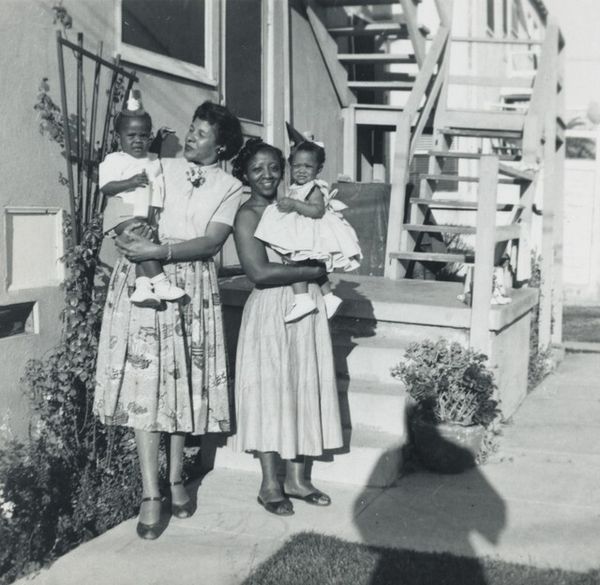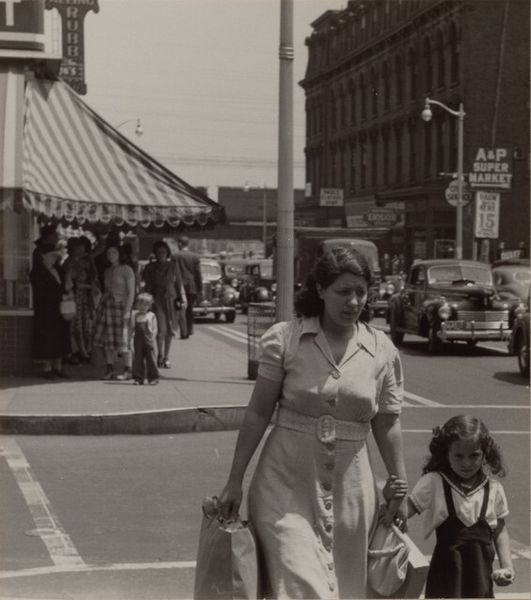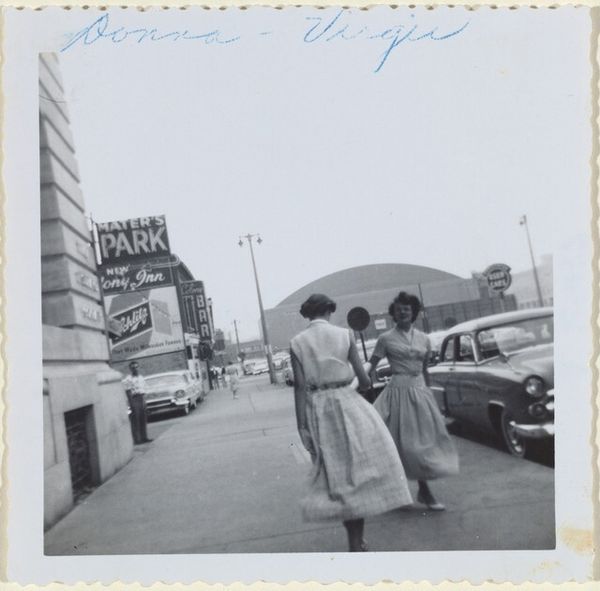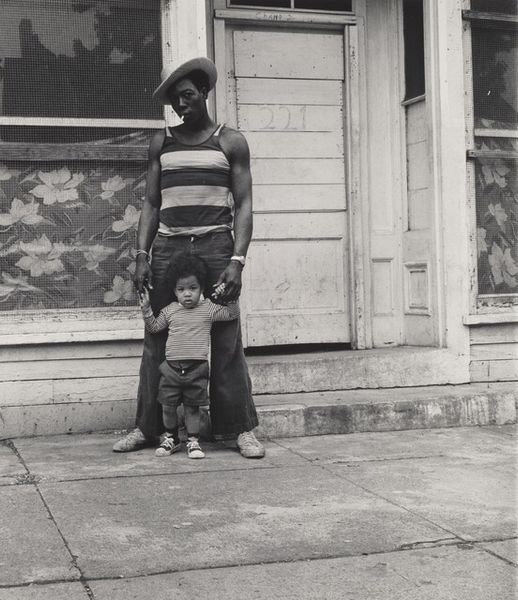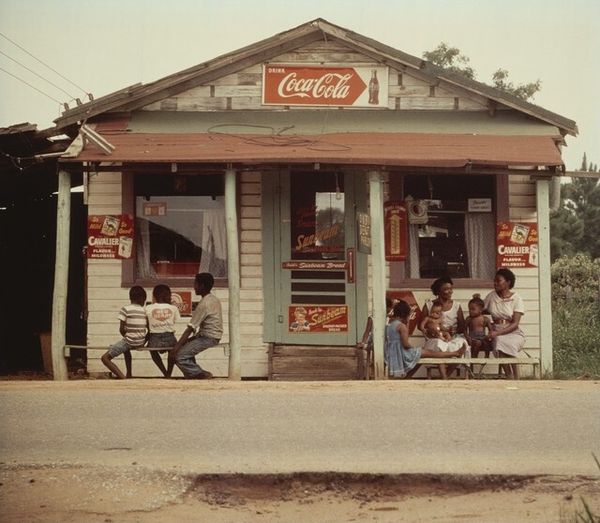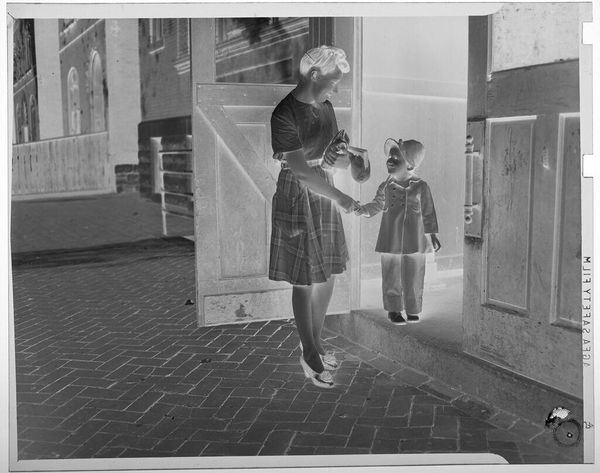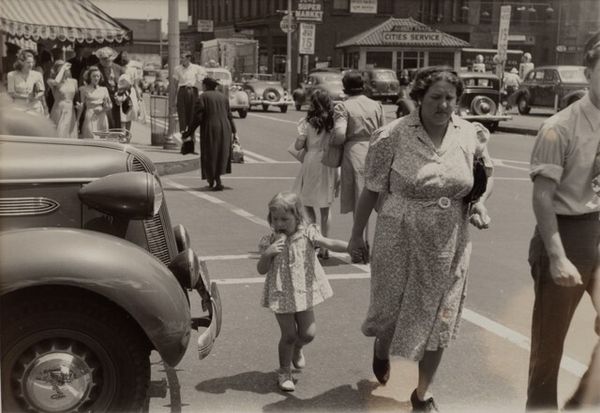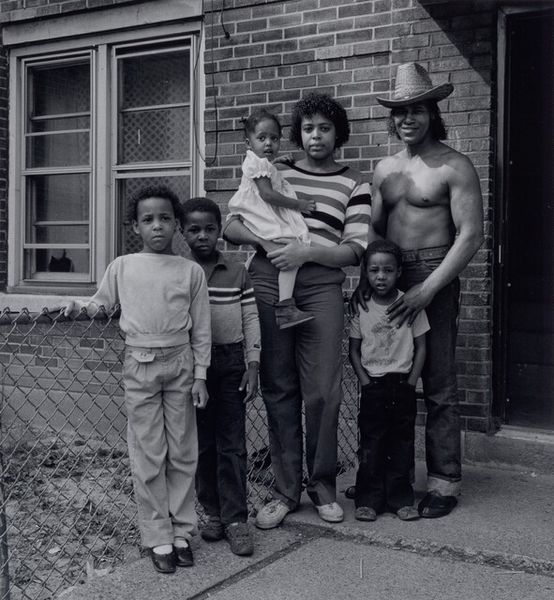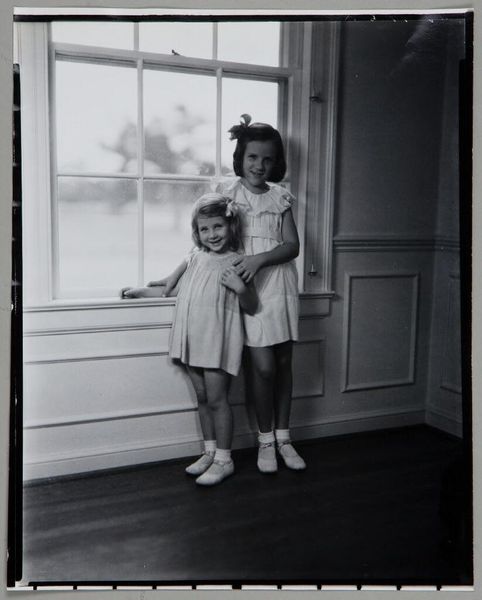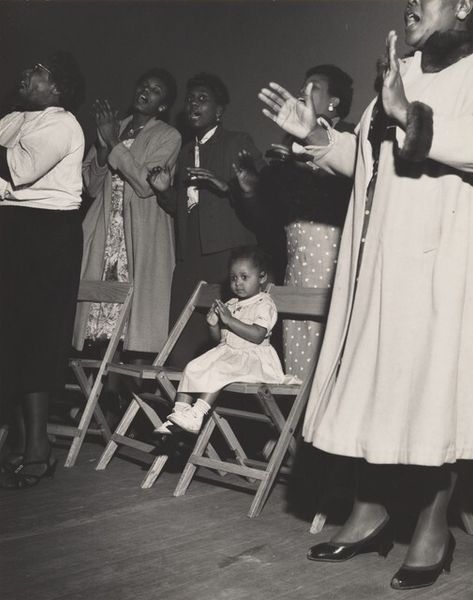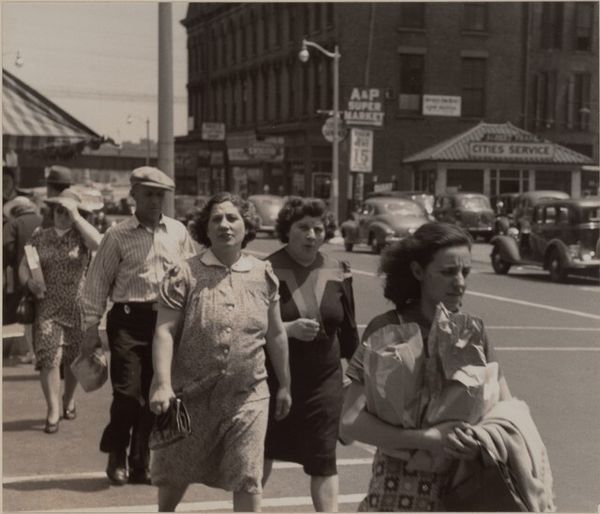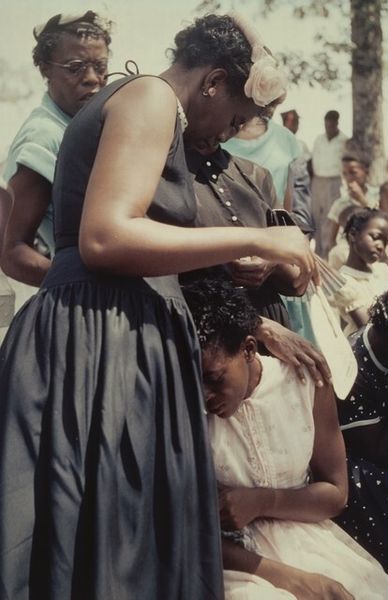
photography
#
portrait
#
culture photography
#
street festival
#
film photography
#
building site documentary shot
#
street shot
#
social-realism
#
street-photography
#
photography
#
culture event photography
#
street photography
#
cityscape
#
person photography
#
film
#
realism
#
documentary shot
Dimensions: sheet: 41.3 × 40.6 cm (16 1/4 × 16 in.) image: 40 × 39.4 cm (15 3/4 × 15 1/2 in.)
Copyright: National Gallery of Art: CC0 1.0
Curator: Gordon Parks' photograph, "Department Store, Mobile, Alabama," taken after 1956, captures a striking tableau of segregation. The work utilizes color film. Editor: My immediate impression is of quiet defiance. The palette feels deliberately muted, almost as if trying not to disturb the ugliness on display. The subjects are rendered with what almost seems like poised dignity amidst this rather bleak environment. Curator: The composition is quite telling. Parks uses the architectural lines of the storefront to emphasize separation. Note how the neon sign proclaiming "Colored Entrance" visually dominates the scene, dividing the space and dictating access. The diagonal created adds a subtle unease, complicating the presumed straightforwardness of the shot. Editor: I'm drawn to the materiality here as well. The clothing, those lacy fabrics, the carefully chosen shoes—they speak of aspiration and a desire to participate in consumer culture from which they are actively barred. These materials contrast sharply with the blatant segregation displayed by the crude sign overhead. Think about the physical labor it takes to keep things bright. Curator: Precisely. The formal arrangement subtly mirrors the social divisions of the time. Look at the tonal contrast: The women's light-colored dresses against the shadowed storefront, it reads as both hope and a marker of difference. There is so much semiotic information within Parks' composition. Editor: And consider the manufacturing and consumption inherent in a department store, places where materials meet desire and identity. This access is not the same for the women, so what labor happens here behind the scenes? The photograph becomes an object itself of material critique—documenting these imbalances. It's no simple snapshot; it's carefully considered documentary work. Curator: It is the genius of Parks that he captures a historical moment while simultaneously creating an artwork of immense structural and aesthetic power. Editor: Parks really uses film as a potent artifact to uncover what these circumstances demanded of human beings. A crucial moment captured.
Comments
No comments
Be the first to comment and join the conversation on the ultimate creative platform.
